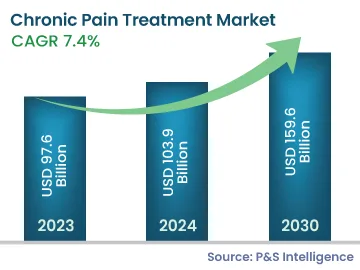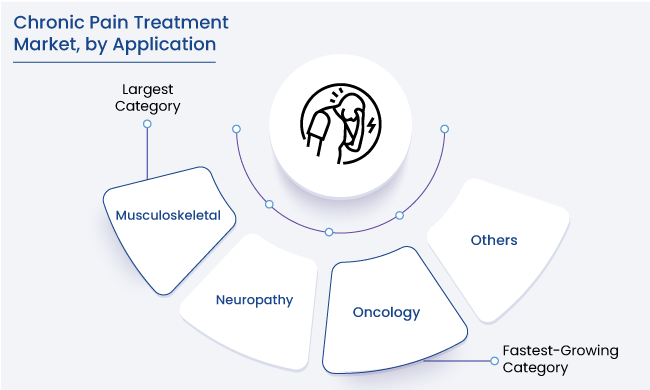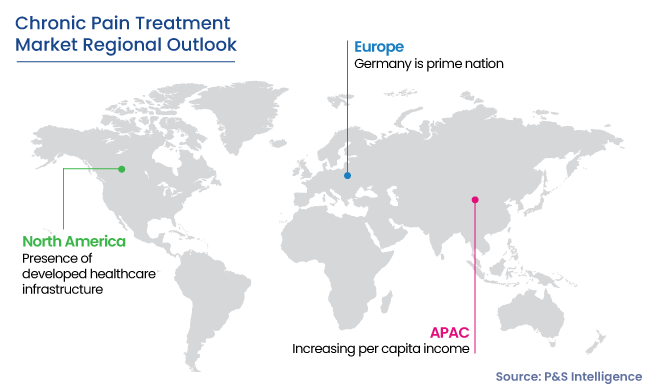The chronic pain treatment market value will reach USD 159.6 billion in 2030.
The market for chronic pain treatment will touch USD 103.9 billion in 2024.
The APAC market for chronic pain treatment is growing at the fastest CAGR, of 7.8%.
Innovations in the field of pain management are the key chronic pain treatment industry trend.
Hospitals will observe the highest chronic pain treatment market CAGR.
The chronic pain treatment industry is highly fragmented, because of the presence of many global and domestic players.





